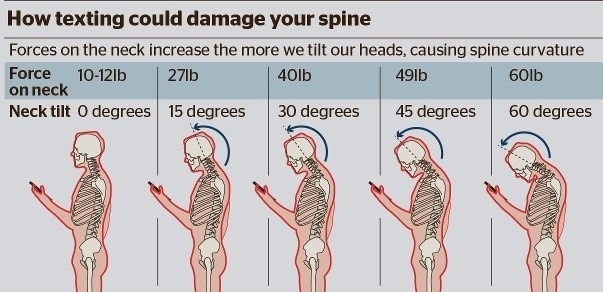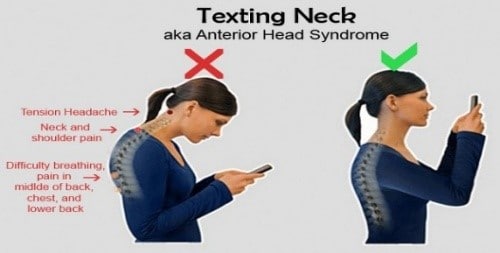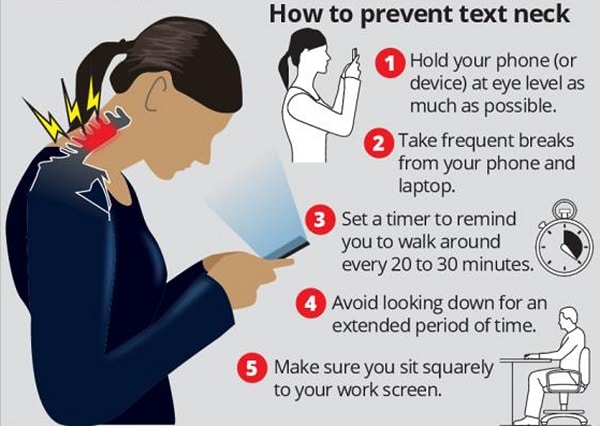Pain in the neck | Text neck syndrome
Text neck syndrome is a Modern age term coined to describe repeated stress injury and pain in the neck resulting from excessive watching or texting on hand held devices over a sustained period of time. It is also often known as Turtle Neck posture.
It is a cause for increasing concern especially with children given their greater propensity to mobile phone usage. Recent figures have shown that around 87% of teenagers (14-18 years) in USA and 79% teenagers (12-15 years) in UK own and use smartphones. Among adults 92% and 95% (18-34 years) reported owing a smartphone in USA and Australia respectively (Statistics about smartphone users worldwide).
Indeed, as mobile technology becomes more widespread, people are spending more and more time with handheld devices like smartphones, e-readers and computer tablets. And ‘text neck’, which can potentially affect millions worldwide, is a growing health concern.
What are the symptoms of text neck ?
Flexing the head forward to use a smartphone affects the spine directly. Tilting the head forward to 15 degrees places about 27 pounds of force on the neck. This increases to 40 pounds at 30 degrees, 49 pounds at 45 degrees and 60 pounds at 60 degrees.
Damage caused by untreated text neck can be similar to occupational overuse syndrome or repetitive stress/strain injury.

Can an osteopath fix text neck ?
 It can also be helpful to perform neck stretches throughout the day to release tension and pain.
It can also be helpful to perform neck stretches throughout the day to release tension and pain.
Since text neck often causes actual curvature and misalignments of the spine, osteopathy care can really help. An osteopath can use spinal adjustments to properly align the spine and keep it healthier and pain free.
How is text neck treated ?
First, prevention is key. Here are several pieces of advice for preventing the development or advancement of text neck:
Hold your cell phone at eye level as much as possible. The same holds true for all screens, laptops and tablets should also be positioned so the screen is at eye level and you don’t have to bend your head forward or look down to view it.
Take frequent breaks from your phone and laptop throughout the day. For example, set a timer or alarm that reminds you to get up and walk around every 20 to 30 minutes.
If you work in an office, make sure your screen is set up so that when you look at it you are looking forward, with your head positioned squarely in line with your shoulders and spine.
The bottom line is to avoid looking down with your head bent forward for extended periods throughout the day. Spend a whole day being mindful of your posture, is your head bent forward when you drive? When you watch TV ? Any prolonged period when your head is looking down is a time when you are putting excessive strain on your neck.

About the author
Pierre Rubert is a senior osteopath at OneOsteo. He graduated from Atman Osteopathic College in 2010 after 5 years full-time studies. In 2009, he graduated from the Phenix Center and was certified in animal osteopathy to treat horses, cats, dogs.
Learn more about Pierre




